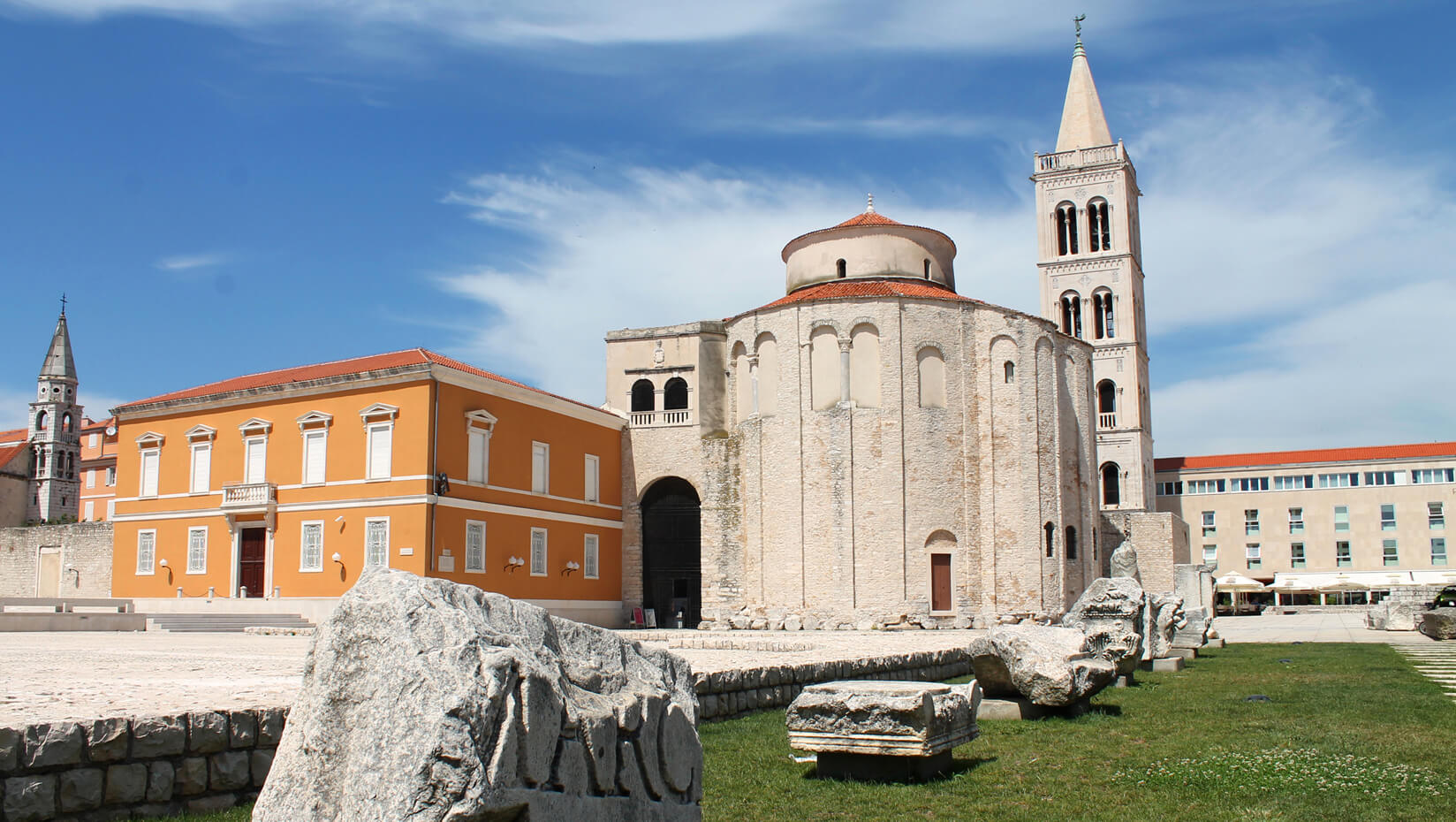
Hudson Museum exhibit explores ancient cities and student discovery
In many cities around the world, the ancient past and modern present blend seamlessly into a hundreds-of-years long story of continuous urban growth and decline.
In Cusco, Peru, the stone walls of the Inca capital city serve as the foundations of 16th century Spanish colonial buildings which currently house modern restaurants and shops. And in Zadar, Croatia, gridded streets, radiating outward from the ruins of an ancient Roman forum, reflect urban planning principles over 2,000 years old and continue to shape the city today, says Gregory Zaro.
“Ancient cities are not simply relics of the past, but rather historical echoes that exist within our modern urban areas,” says Zaro, associate professor of anthropology and climate change.
Zaro has studied ancient cities around the world — from Peru, to Belize, to southeastern Europe — and since 2015 has led an archaeological field school for undergraduate students at Nadin-Gradina, an archeological site outside of the city of Zadar. The field school is an internationally collaborative program of field research and education between the University of Maine and the University of Zadar.
This body of research is the subject of a new photography exhibit at UMaine’s Hudson Museum. The photographs tell the story of long-term urbanization and landscape change with a special focus on Zaro’s most recent research and field school in Croatia.
The photo exhibit “UMaine Field School in Zadar, Croatia: The Archaeological Study of Ancient Cities” will run through April 27 in the Hudson Museum’s Minsky Culture Lab at UMaine’s Collins Center for the Arts.
One photograph, showing an area excavated during the 2015 field school, reveals a dense area of walls and structures that range in age from the late Iron Age to the Late Middle Ages – a timeline spanning over 2,000 years. Nearby are the remains of a military bunker, which was in use as recently as the mid 1990s.
Areas like Zadar, that have a long legacy of urban continuity, allow for archaeological research to make significant contributions to contemporary issues while generating knowledge about urbanism in the ancient, historic and modern worlds.
The Nadin-Gradina Archaeological Project grew out of Zaro’s Fulbright experience at the University of Zadar in 2013 and to date has included 17 UMaine undergraduate students in research and education experiences abroad.
While the integrated archaeological research and education goals are the focus of the program, Zaro says participating in daily life in Croatia is particularly rewarding.
“The field school is a truly international experience,” says Zaro.
“Students live and culturally interact within Croatian cities and towns and work in the field alongside Croatian university students. This gives them rich insight into life beyond the U.S. borders, which is a particularly rewarding element of the experience.”
“The Hudson Museum has a longstanding track record of partnering with the Department of Anthropology and a mission of showcasing UMaine’s cultural research to the people of the state,” says Gretchen Faulkner, director of the museum. “Zaro’s exhibit highlights his international research through the lens of the student experience.”
The Hudson Museum is free and open to the public from 9 a.m. to 4 p.m. Monday through Friday and from 11 a.m. to 4 p.m. Saturday. It also is open 90 minutes prior to CCA events and Bangor Symphony Orchestra performances as well as during intermissions.
Contact: Walter Beckwith, 207.581.3729; Gregory Zaro, 207.581.1857
